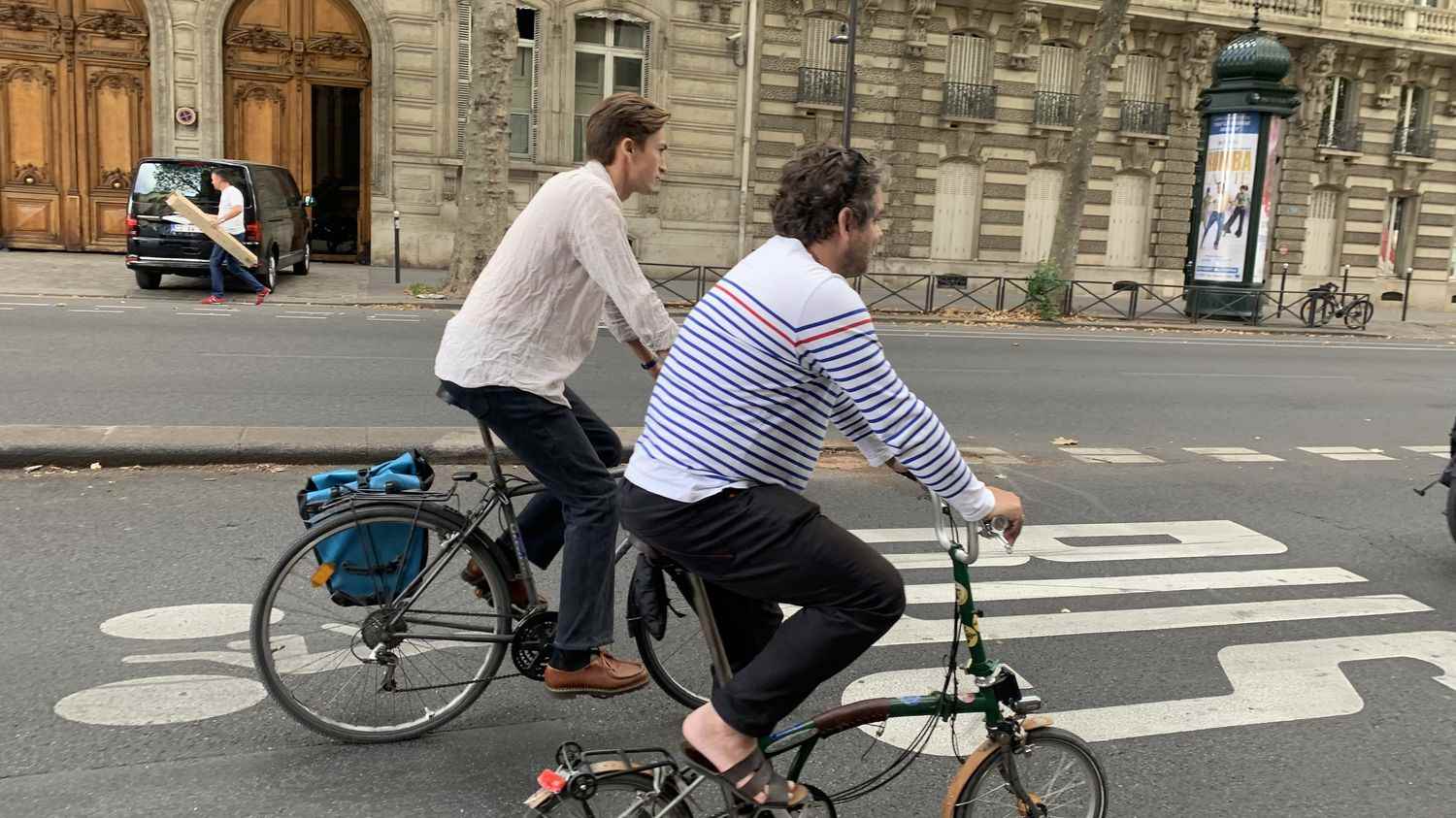The cohabitation between bicycles, scooters and buses on shared lanes is sometimes complicated. Witness Yassine, on a scooter. He has just avoided a taxi on this 4m50 wide Parisian road where bicycles and buses also run. “I slipped! Fortunately, more fear than harm”he sighs.
“It’s a bit dangerous, we only have 4m50 for everyone. As we are smaller with a scooter, we have to get to the side, it’s complicated.”
Yassine, scooter userat franceinfo
Complicated, especially to overtake, because users do not have enough space to do so safely, as Boubacar explains, by bike. “If you’re on a bus lane, that’s a problem, because the buses will squeeze you”, he says. Every day, they avoid buses and even go so far as to choose much longer routes so as not to take this type of route.
The problem of shared lanes has returned to the forefront of the news with the death of two teenagers in Lyon, hit by an ambulance driver on a bus lane. If the driver is a multiple traffic offender, the question arises about the cohabitation between users of this type of road. “The problem here is that there is a very heavy traffic of taxis and buses and therefore it can only be suitable for seasoned cyclists”explains Olivier Schneider, the president of the French Federation of bicycle users (FUB).
>>Lyon: probationary license, bus lane … These questions that arise after the fatal accident involving an ambulance and a scooter
According to him, the greatest danger on these lanes are the frequent stops of buses which force non-motorized two-wheelers to pound, which is even more dangerous for scooters.
“The scooter is a less stable vehicle, which absorbs the roughness of the road less well. What the cyclist compensates for with his arms and his large wheels, can cause a scooter rider to fall, even fatally.”
Olivier Schneider, President of the French Federation of Bicycle Usersat franceinfo
He pleads for the creation of more lanes reserved only for bicycles and scooters, three to four meters wide, but especially with low walls or plants to separate them from motorists. “We can clearly see that paint strokes do not protecthe develops. It is supposed to delimit a space, but it is not respected: whether voluntarily, by flouting the highway code or whether involuntarily in the context of a loss of control of a vehicle .” He does not mince these words: “It’s quite simply dangerous, unpleasant, accident-prone, not desirable, it’s the wrong good idea.” For him, secure cycle paths throughout the city will encourage even more city dwellers to opt for soft mobility.
The difficult cohabitation of bicycles, scooters and buses on shared lanes – A report by Margaux Queffélec
to listen
